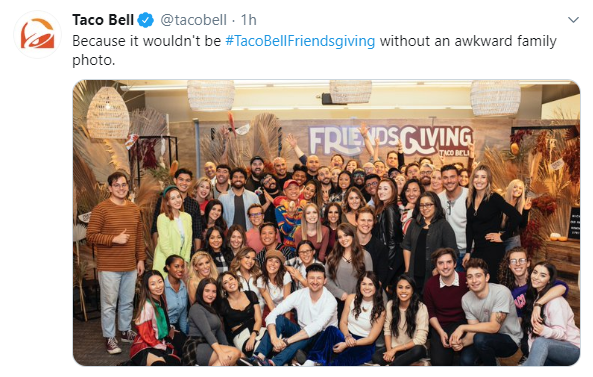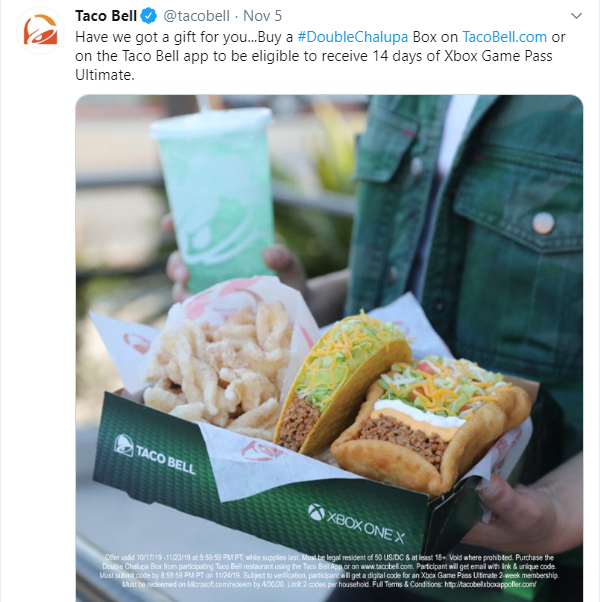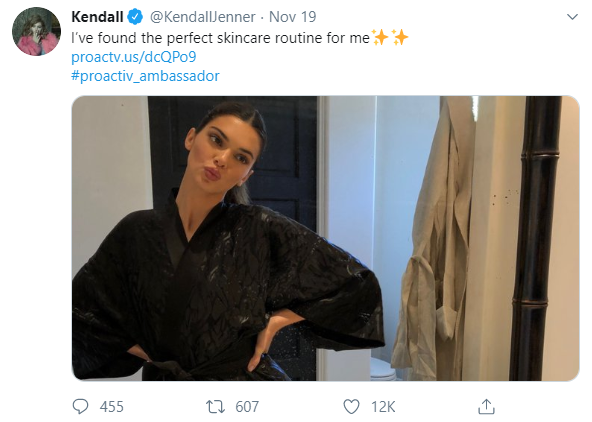MARKETING
25 Things You Should Never Do on Social Media

Social media has the power to grow your brand into a massive empire.
But if you aren’t careful, it can do just the opposite.
Take Snapchat, for example.
In 2018, Snapchat ran an ad game called “Would You Rather?”
One of the questions asked was if users would rather “Slap Rihanna” or “Punch Chris Brown.”
The result?
Worldwide outrage and an $800 million loss for Snapchat.
Sure, the ad’s bad taste is pretty obvious. No one wants to play a game based on domestic violence.
But did you know there are other less-noticeable social media blunders that lead to a bad reputation and failure to grow your brand?
Here are some you should never do.
25 Social Media Blunders You Should Stay Away From
Stay away from these 25 mistakes, and your social media campaign will flourish.
1. Not Being Up-to-Date with Current Trends
In 2016, Wendy’s posted a meme of Pepe the Frog dressed up as their mascot.
What they didn’t know was that the cute cartoon frog had recently become an image of racism and white supremacy.
It’s not hard to imagine the response.

To avoid a mistake like Wendy’s, do a little research before posting anything on social media.
2. Posting Insensitive Content
Be humorous, but stay away from insensitive jokes.
We all remember the Yanny vs. Laurel audio clip that tore the web apart.
To jump into this trend, the U.S. Air Force’s Twitter manager posted this social media gaffe.

Just. No.
3. Confusing Your Business Account with Your Personal Account
It’s important to be entertaining and engaging, but don’t forget to distinguish between business posts and personal posts.
For instance, don’t post a photo of what you had for lunch on your business account (unless you run an organic diet-in-a-box food service).
4. Getting Angry When You Get Negative Comments
As your brand grows, you’ll get both positive and negative comments.
Remember, negative comments are there to help you improve.
Deal with them open-mindedly and try to solve the problem instead of lashing back.
Here’s an example from a buyer who complained at Toblerone’s Facebook Page.

Toblerone’s response?

When you put genuine effort into helping customers with their problems, you both appease customers and gain input for your brand’s improvement.
5. Skipping the Editing Process
Before posting anything on social media, edit it viciously.
Typos and grammar mistakes will be noticed, and they won’t do your brand any good.
6. Failing to Address Mistakes
No matter how strict you are with your rules and guidelines, mistakes will pop up now and then (because we’re all human, right?).
When they do, address them tactfully. You can even be a little humorous.
Take this example from The Red Cross addressing their social media specialist Gloria Huang’s mistake as inspiration.
7. Posting Only When Inspiration Strikes
On your personal social media account, you can post any time the mood strikes you. Or not at all.
Not so with your business account. In fact, the more you post, the more exposure you’ll gain.
Here’s a quick guideline from Volusion on how often to post on different social media platforms.
- Facebook and Instagram: Once or twice daily.
- Twitter: 5-10 tweets daily.
- Pinterest: 5-30 pins daily.
- Linkedin: 20 posts a month.
8. Forgetting Your Mission to Enrich Your Followers’ Lives
Starting a business isn’t all about boosting your earning potential. It’s about developing a product or service that’ll enrich people’s lives.
So when you take to social media, make it your goal to reflect that mission.
Share content that’s useful, relevant, and helpful to people. Enrich their lives.
Look how Great Escape Publishing does it on their Facebook page.

9. Sounding Too Salesy
While it’s a good practice to promote new products on social media, don’t overdo it.
No one will keep following a brand that constantly pushes them to buy something.
10. Ignoring Comments on Your Posts
Engagement is of top priority on social media. So when your followers comment on your posts, comment back.
Here are some tips on responding to comments:
- Be friendly but professional.
- Absorb what people are saying and write an appropriate response. Don’t simply reply with “Thanks for your comment!”
- Be helpful. Your goal should be to leave users feeling satisfied.
11. Limiting Yourself to One Social Media Platform
Facebook is today’s largest social network, with more than 2 billion users.
While you should be active on Facebook, don’t leave out other popular social networks that cater to audiences beyond Facebook.
Some of these include Linkedin (660 million members) for business users and Pinterest (322 million users) for creatives.
12. Being Active on All Social Networks
Don’t limit yourself to Facebook, but don’t go overboard with activity across all social networks.
The key is to find which networks your potential customers are most active in.
For instance, if you’re marketing to business people, focus on LinkedIn.
If your customers are mostly Gen Z, pour your efforts into Snapchat.
13. Buying Followers
Although it’s tempting to grow your followers list fast, buying followers is a bad idea.
Numbers aren’t everything.
A single person who engages with your brand is better than a hundred who ignore it.
14. Leaving Out Photos & Video
Photos and videos, done right, are attention-grabbers.
For instance, this beautiful photo from the Emirates Facebook Page got more than 7,000 reacts.

15. Forgetting Your Target Audience
If your target market is the business world, leave out sharing Kylie Jenner’s latest tweet, or Taylor Swift on Jimmy Fallon laughing about her embarrassing post-laser-surgery video.
16. Being Satisfied with the Generic
Find a way to make everything you post unique.
Here are some ideas that work:
- Interview a satisfied customer.
- Share a personal story.
- Answer a question customers in your niche usually ask.
17. Not Making Use of Hashtags
Hashtags give social media users a roadmap to finding what’s relevant to them online.
Using the right ones will leverage your brand and get you more attention.
Look at this example of smart hashtag usage from Foyles Bookshop’s Twitter page.

18. Putting Up an Impersonal Front
Social media is all about connections.
Users want to talk to humans, not robots.
So make your posts relatable, friendly, and fun.
For instance, check out this engaging and humorous post from Taco Bell on Twitter.

19. Leaving Out Healthy Competition
Run contests on social media whenever you can!
You don’t have to offer a trip to Italy or a million dollars.
Sometimes, an Xbox Game Pass is enough to boost brand engagement.

20. Doing Everything Yourself
How do you manage 2 Facebook posts, 1 Instagram story, 30 pins, and 10 tweets in one day?
If you do everything yourself, your quality will deteriorate.
The answer?
Hire a tech-savvy, witty, experienced social media manager.
21. Not Using Influencers
Influencer marketing is a powerful strategy that promises a huge ROI.
For instance, how many of us have heard of Proactiv because of Kendall Jenner’s ambassadorship?

When choosing an influencer, don’t go for any random celebrity or expert who’ll pose with your product for money.
Jenner was a good choice for Proactiv because of her well-known acne issues.
22. Being too Casual
Leave out the slang, acronyms, and shortcuts.
“You are beautiful” works better than “U R GORG” every single time.
23. Not Getting Help from Ads
Posts from users’ family, friends, and favorite pages can easily drown your brand’s content on social media.
In this case, it’s a good idea to boost your marketing with paid ads.
24. Always Posting Your Own Content
Sharing content from other users related to your niche is helpful to your followers.
Also, it allows you to leverage your brand by identifying with well-known personalities and businesses.
25. Forgetting to Listen
The bigger your brand grows, the more it’ll be talked about.
Be sure you listen. Use tools like Hootsuite and Google Alerts to help you.
How to Avoid Social Media Blunders That Will Cost Your Marketing Campaign
You want your social media campaign to bring you up instead of down.
What it boils down to is knowing where to draw the line between good and bad marketing practices.
- Be friendly but not unprofessional.
- Be outspoken but not insensitive.
- Be personal but not too casual.
- Post your own content, but not too much of it.
- Promote your products, but don’t be salesy.
Once you find the right balance for every aspect of your campaign, you’ll be on your way to success!
More Resources:
Image Credits
All screenshots taken by author, November 2019












